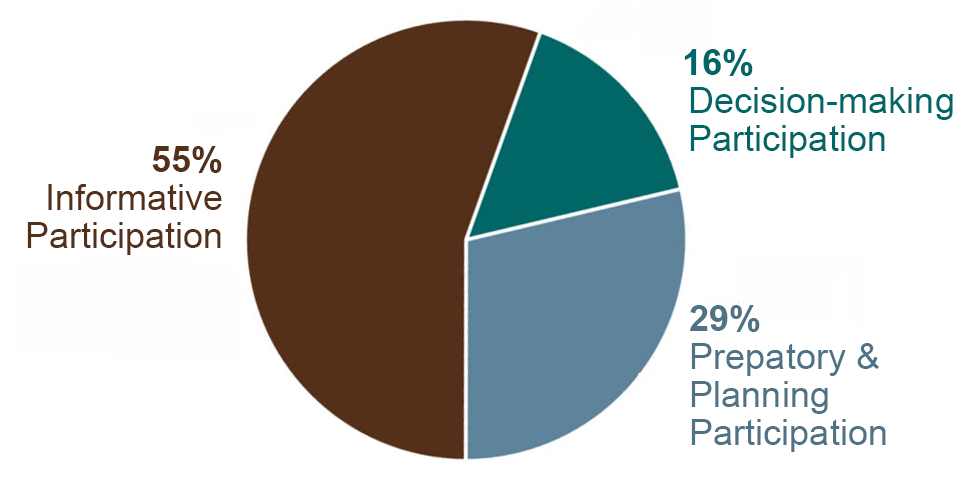Living Our Values Through Stakeholder Compensation

What does it look like to equitably compensate grantees and other partners and how can funders do it in a way that aligns with their values? The Kenneth Rainin Foundation explored this question and shares their process for paying stakeholders.
This piece was originally published by the Kenneth Rainin Foundation and is re-published here with permission.
In 2022 we wrote about our commitment to developing regenerative and restorative policies grounded in trust, interdependence and solidarity. We acknowledged that contributions by others add value to our work and that business as usual translates into grantees feeling duty bound to provide a service at no cost because of the funder and grantee relationship. We began to assess the many ways we work with grantees, consultants, vendors and community members. We have always engaged experts to inform our work. From our earliest days, our Scientific Advisory Board provided guidance on our Health strategy and recommended biomedical research grants to our Board of Directors. Film industry experts joined SFFILM Rainin Grant review panels, and teachers and families provided essential input on delivering evidence-based reading instruction. However, several years ago we realized that we were compensating some experts and not others. There were cases where we expected stakeholders to offer their expertise and time without compensation because of our grant relationship with them.
We resolved this issue by offering compensation to any stakeholder who participated in our work. When we looked to the field for guidance on appropriate rates, we found little data. As a result, our compensation practices evolved arbitrarily and in siloes, often differing by program area or department. The number of our stipends and honoraria multiplied, with definitions of what falls into each category often muddled. Pressure mounted on our Finance and Accounting teams to keep up with payments. In sum, we lacked a clear and equitable policy and knew we could do better. As part of our equity journey and with leadership from Grants Officer, Alex Featherston-Gomez, our Finance, Accounting, Communications, Arts, Education, Health and Grants Management teams collaborated to take a deep dive into our stakeholder compensation data to better align our practices with our values. Below we share more about the process we used, the issues we grappled with and the outcomes.
Exploring the Field
We see our partnerships with our external stakeholders as symbiotic. Their contributions strengthen our progress and advance our mission, and we strive to do the same for them. Although we believed our partnerships were mutually beneficial, did our compensation practices reflect these beliefs, and were our compensation practices on par with other funders? These guiding questions informed our literature review.
“Achieving our mission requires collaboration. Community wisdom and expertise are vital to identifying and shaping opportunities for meaningful change.”
Jen Rainin, Rainin Foundation CEO
The information we gathered underscored the importance of valuing all stakeholders for their contributions to our work. It supported the idea that funders aren’t entitled to a community’s capital based on the grantee/funder relationships. The literature also stressed that foundations engaging in participatory grantmaking or seeking input should employ compensation policies that address the traditional power imbalance in grantee/funder relationships.
When funders make requests of grantees and other partners, we need to fairly compensate them for the value they provide in acknowledgement of their expertise, lived experiences, and time and effort. Although pay rates varied in our research, making it difficult to measure whether ours were on par, we determined that we needed to create a scale that felt ethical to us. As we developed our external stakeholder compensation framework, we took these findings into account. We evolved beyond being well-intentioned partners to integrate restorative and regenerative practices across departments.
Paying More Than Lip Service
Examining whether our intentions matched our impact, we delved into the data. Our Finance Team created a report of honoraria and stipends paid between 2018-2022, which we analyzed using a participatory grantmaking lens. Borrowing from inclusive community engagement methods by urban planners in city resource design and development, the following categories describe our requests to external stakeholders:
Three Types Of Community Participation
- Informative Participation: foundation and community exchange innovations in the field.
- Preparatory and Planning Participation: soliciting ideas, expertise and feedback from community to strengthen our strategic or grantmaking framework.
- Decision-Making Participation: ceding grantmaking power and decision-making to community.
“Three Types of Community Engagement in Urban Planning Projects.” Maptionnaire, 10 Aug. 2022, Mapptionaire blog.
Stakeholder Participation & Compensation
The chart below reflects the type of stakeholder participation (by percentage) we compensated from 2018-2022. It is based on 406 payments.

More than half of our payments were for informative participation such as interviews, trainings and speaking fees. Decision-making participation included serving on juror panels and advisory boards to make funding recommendations. Preparatory and planning participation activities included reviewing blog and video content and providing feedback on proposed program strategies. Policy-wise, we found variations in honoraria and stipend amounts. The data clearly illuminated the need for operational standardization and guidance.
Regenerative And Restorative Recommendations
The following spectrum by Justice Funders includes examples of practices that range from extractive to regenerative, to help funders imagine some of the shifts they can make.
| Extractive |
Less Extractive |
Restorative |
Regenerative |
|---|---|---|---|
| Foundations wield power over grantees in paternalistic and controlling ways that are based in risk-aversion, scarcity and fear. | Grantees are expected to be responsive to foundations’ desires for programmatic activities and requests for time, knowledge and other resources. | Grantees’ knowledge, expertise and experiences are acknowledged and respected. | Authentic partnership where grantees retain the right to design the solutions for their lives rather than have approaches imposed upon them. |
The Rainin Foundation’s mission and vision are simply not achievable without our stakeholders and their essential work. In line with our values and based on our data and literature review, we recommended to our Executive Team that we continue the restorative and regenerative practice of equitable compensation.
We determined that the compensation policy needed to meet the following criteria:
- Reflect our values and strategy
- Be straightforward and transparent—stakeholder compensation should be easy to recommend, pay and receive
- Compensate our community partners for their contributions to Rainin’s mission that fall outside of work outlined in their grant agreements or within the confines of previous or existing relationships
- Pay the individual, not their organizations, and stakeholders should have agency to accept, waive or redirect compensation
- Paying people, not by credential or job title, but for their contribution to our work
When possible, we want to give agency to our external stakeholders and community to manage compensation. For example, the consultants who supported our learning and evaluation framework managed compensation for the external partners who provided information and planning guidance to us.
Strategy Meets Tactics
Implementing restorative and regenerative external strategies requires internal partnerships rooted in trust and our values. Our collaborations in this project included:
- Partnering with Finance to analyze data and streamline workflows.
- Devising a monthly payout schedule to avoid inundating Finance with one-off payments.
- Developing electronic forms and automated processes to collect payee information, approvals and required documents.
- Simplifying the process further by eliminating the need to distinguish between honoraria and stipends.
- Continuing to collect data on payments to further strengthen our practices and help us make informed decisions.
Equitable Compensation
We designed a flexible range-based pay structure emphasizing the characteristics of the service, not the stakeholder providing input. While some instances may require factoring in a stakeholder’s tenure or demand in the field, we avoided using credentials and field of expertise as primary determinants. Rooted in our compensation study data and insights from the field, our pay scale provides descriptive data points (e.g., median and maximum rates) and criteria to consider when determining compensation (e.g., time commitment and role in activity). We aim to provide equitable compensation as multifaceted as our stakeholders’ expertise and the services the Rainin Foundation relies on.
“True investment asks us to show up with cultural humility so we can forge authentic relationships with each other. Holding these authentic and abiding relationships with our grantees helps level the power differential so we can get to our best ideas together.”
Rivkah Beth Medow, Rainin Foundation Board Member
Realizing Our Values Through Practices
The steps we took remedied the internal challenges we faced. We simplified the process, reducing the number of people and the steps involved. These changes will result in a much more seamless experience for our grantees and partners. We also standardized what were disparate internal practices, clearing up confusion for staff involved. Our discussions translated into shared ownership over the policy and procedures. And we’re satisfied that our philanthropic practices for community input agree with our values. In reflecting on what we accomplished together, we realized that this was yet another pathway for making meaningful connections—with each other and with the communities we serve.
Shelley Trott is the chief program officer at the Kenneth Rainin Foundation
Alexandria Featherston-Gomez is the grants officer at the Kenneth Rainin Foundation
The views and opinions expressed in individual blog posts are those of the author(s) and do not necessarily reflect the official policy or position of the National Center for Family Philanthropy.
